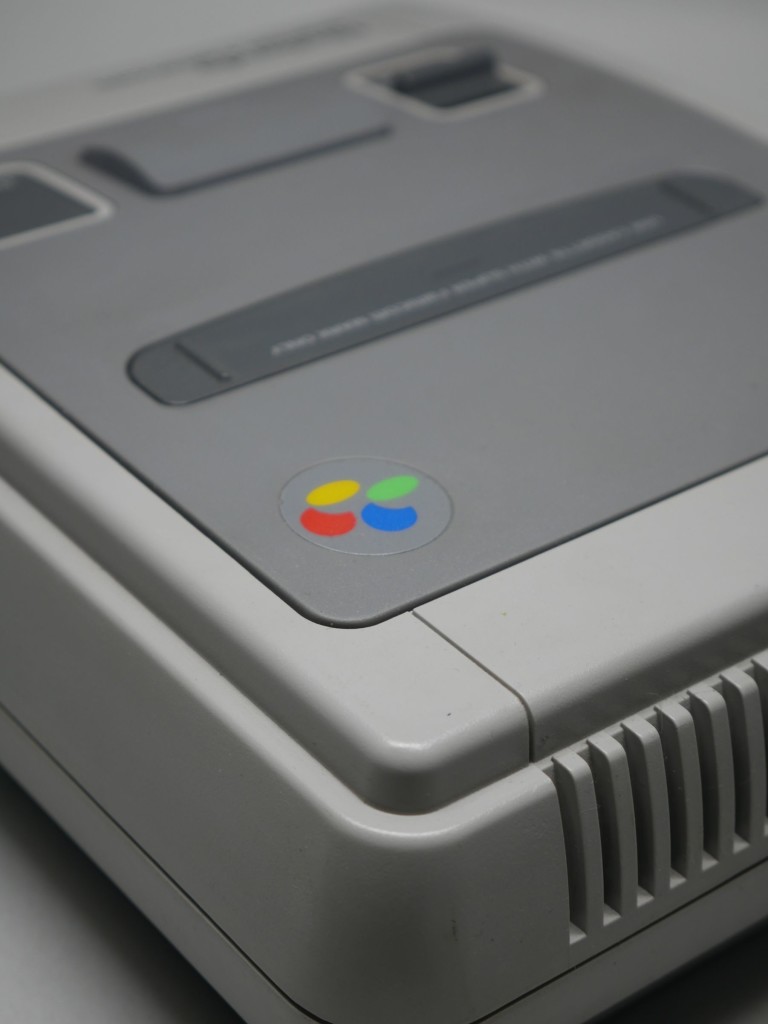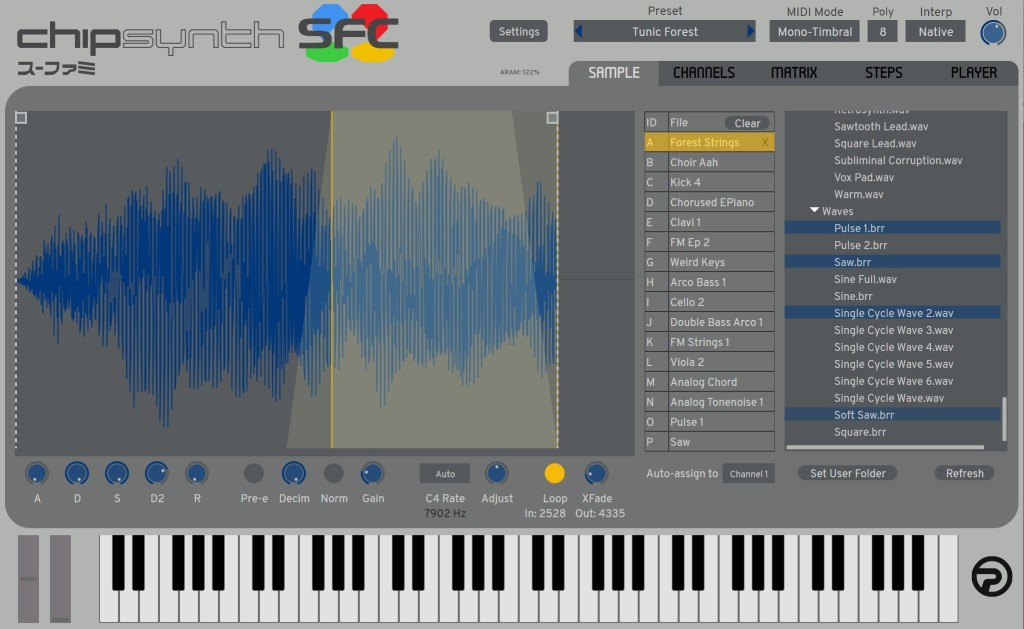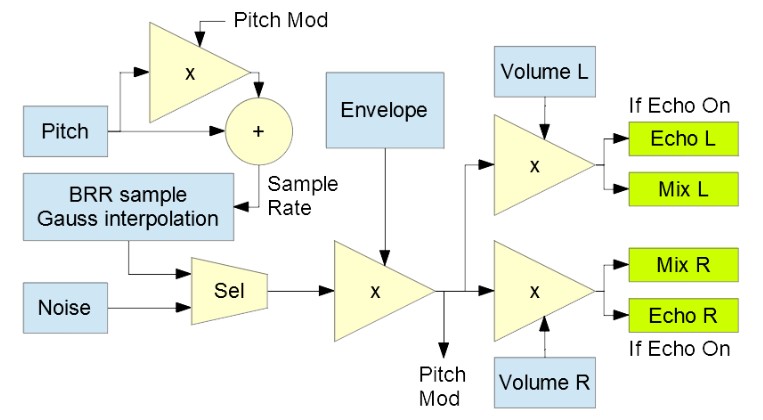It’s 1990. Nintendo has just leaped into the 16-bit age. And the voice of its new Super Famicom (SNES) console is about to open a window to a world of lush, glossy sound. Now, just shy of 30 years later, that spirit has taken plug-in form.
Before talking about the SHVC-SOUND chip and architecture of the Sony-built S-SMP audio subsystem, it’s better to just listen to the kind of music this produces. Here’s an album of just-released music, made not on that classic Japanese game console, but this authentic new software recreation.
Yeah, that sound.
Some things age poorly. Some things sound old, but bring back a wave of nostalgia. But the Super Famicom (branded Super Nintendo Entertainment System outside Japan) is something else. It somehow feels more modern with time, like great design. It’s there in that slick gray sheen on the plastic in these glamor shots reproduced here. But it’s also there in the 16-bit sampler architecture.

The sound of the SNES soundtrack era is the result of talented game composers adjusting to several factors. This is a 16-bit digital sampling system, but also contains analog components. And there’s a specific architecture – 8-voice multitimbral, with sample playback, FM synthesis, and modulation, all layered together.
Montreal-based Plogue have made a specialization of producing intricate recreations, bit-for-bit, of these kinds of systems. (Developed David is regularly sending over pics of complex test rigs that he’s used to exactly match each detail. I mean, you only do this for love, basically.) chipsynth SFC is special in that it’s both a more modern, complex architecture, and that they’ve done an uncommon amount of work to make actual production easy.
In this age of recreations – Moog to Roland to Buchla – a first may be Donkey Kong Country composer David Wise chiming in to say that it’s “really funny” how much easier it is to use this plug-in than it was to compose for the original hardware.

That’s the nice twist here – you just drag and drop samples, even whole songs, and the song player here will just match the result. Go to snesmusic.org for instance, drag and drop, and individual samples will appear pre-configured in the sampler. That’ll please game soundtrack lovers, but anyone can take advantage of the unique instrument here – and there’s a full sample library there to get you going. (Sega fans, what you want is last year’s chipsynth MD – so yeah, the console wars of the 80s and 90s can live on.)

Video walkthroughs
Full tech run-down:
And here’s a great demo of this thing in action playing:
What makes the NES/Famicom sound like that
The original architecture:
- S-SMP (aka SPC700, ≈ 6502+timers and ports)
- S-DSP chip (responsible for all synthesis)-
- 64kb of static RAM (also known as “ARAM”)
- NEC 16-bit stereo PCM DAC
- Dual op-amp analog filtering section
- Connectors going back to main board
— all of which Plogue have modeled. Note the presence of analog filters. It seems like a sample library would be enough to emulate this sort of machine, but it isn’t; the analog filter section and even a specific DAC (keeping in mind the ‘A’ in DAC is ‘analog’) can indeed color a sound.
Here is a fascinating flow chart of how each voice works, from the manual:

Oh yeah, the other detail – those samples are compressed, and played back with a particular interpolation. So there’s digital coloration, too. That’s the other reason this isn’t just an exercise in nostalgia and historical curiosity. I think part of what our current generation of synth designers may discover is that there were unintentional artistic details in the architecture of other synths. Then, it was born purely of necessity. Now, it’s something we find has new artistic and creative use.
What the plug-in does
All of that work translates into a plug-in that’s very accessible for you, so you can focus on composition. You have an active wave display and the expected sample controls (plus a Decimate control), a browser, and envelope controls. For layering, you get an 8-channel view with more controls, plus FM (per-channel), noise, echo, retriggering, delay, glide, and range. That way you can layer together your own patches – and take advantage of unique Nintendo-y echo and even phase cancellation effects.

There’s also a powerful Modulation Matrix with step sequencers, and – since this is a plug-in, not a game console, MIDI CC control of everything.

And oh yes, step sequenced parameters:

There are tons of other specs and details in there, as one would expect of the lovingly crafted Plogue stuff. And do you feel it’s necessary to swap the color scheme to accurately represent the Japan/Europe or and US edition? No worries; it’s in there.
There’s also a player, so if you just want to kick back and listen to some classic game soundtracks, you can do that, too. (Take that, Spotify!)

More info:

chipsynth SFC is available for 64-bit Windows and 64-bit macOS, as VST, VST3, AAX, and standalone application, plus 64-bit Mac Audio Unit.
US$39.95.
https://www.plogue.com/products/chipsynth-sfc.html
More music:
Random nerd linkhole starts here:
http://junkerhq.net/MDFourier/
Previously: